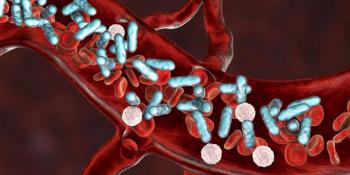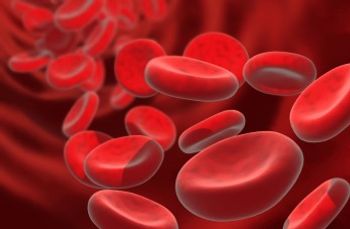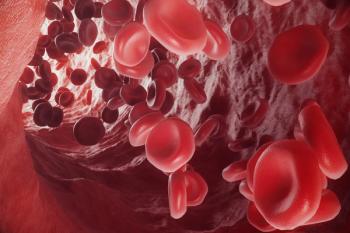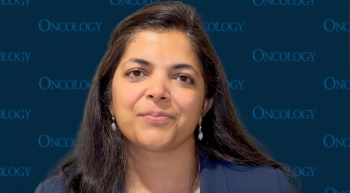
- ONCOLOGY Vol 39, Issue 9
- Volume 39
- Issue 9
- Pages: 386-393
Convergent and Divergent Signaling Pathways in Cancer: A Dual-Axis Model for Adaptive Precision Oncology
Explore how oncogenes and signaling pathways converge and diverge in cancer, shaping diagnostic and therapeutic strategies for personalized interventions.
Introduction
Cancer progression involves complex disruptions in the cellular signaling pathways that govern proliferation, differentiation, survival, and interactions within the tumor microenvironment (TME). Although the genetic alterations driving cancer are highly heterogeneous, their functional consequences often converge onto a limited set of evolutionarily conserved signaling networks. The MAPK, PAM, and Wnt/β-catenin pathways, among others, represent recurrent hubs targeted by diverse oncogenic events in cancer.1-3 Notably, distinct mutations, such as KRAS mutations in colorectal, pancreatic, and lung cancers,4 HER2 amplifications in diverse cancers, including breast and gastric,5 or PTEN loss in prostate and glioblastoma,6,7 activate these common pathways, underpinning the concept of signaling convergence. Understanding how these pathways are maintained, modified, or co-opted in various cancers provides crucial insights into the fundamental drivers of tumor behavior and underscores the necessity of pathway-targeted therapeutics.
This convergence is accompanied by considerable downstream divergence, resulting in profound tumor heterogeneity and therapy resistance. Emerging evidence suggests that the interplay between these diverse pathways extends beyond simple linear signaling
cascades, encompassing complex cross talk and feedback mechanisms that contribute to tumor plasticity.8-10 Factors such as epithelial-mesenchymal transition (EMT), immune evasion, metabolic reprogramming, and cancer stem cell (CSC) maintenance all branch from these core pathways, complicating treatment strategies. Moreover, the TME exerts additional selective pressures, promoting adaptive mechanisms and therapeutic escape.11 Consequently, a comprehensive examination of conserved and cancer type–specific alterations in physiological pathways remains a priority for developing more effective, personalized cancer treatments.
This review specifically aims to address this critical gap by proposing an innovative integrative model. It explores in depth how signaling pathway convergence can be therapeutically leveraged, while simultaneously anticipating and counteracting divergent adaptive responses through real-time molecular monitoring strategies, including next-generation sequencing and liquid biopsies. Furthermore, it offers perspectives on how emerging diagnostic technologies can be practically integrated into clinical workflows to dynamically guide personalized therapeutic strategies. Distinct from existing summaries, this review critically appraises current limitations, explicitly highlights unmet clinical needs, and outlines specific future research directions. By combining detailed mechanistic insights with practical clinical recommendations, this manuscript seeks to advance the understanding of signaling pathway dynamics, paving the way for more effective, durable, and adaptive cancer therapies.
Pathways Convergence
Cancer development, though driven by a broad spectrum of genetic alterations, typically funnels into a limited set of highly conserved signaling pathways. Such convergence is essential in identifying viable therapeutic targets; however, it inherently predisposes tumors to downstream adaptive divergences, as detailed comprehensively in the section detailing pathway divergence. Table 1 provides a concise overview of major canonical signaling pathways frequently dysregulated through genetic or epigenetic mechanisms across cancers.
Although these pathways are universally activated across various cancers, significant divergence occurs downstream, profoundly impacting therapeutic outcomes and clinical resistance, as elaborated in the section detailing pathway divergence.
The p53 pathway, with TP53 acting as the “guardian of the genome,” is frequently mutated or inactivated in solid tumors via MDM2 overexpression, resulting in poor DNA damage responses and evasion of apoptosis.12 The RB/E2F axis, pivotal for G1/S phase cell-cycle transition, is widely disrupted in retinoblastoma, small cell lung cancer, and other malignancies, allowing cells to bypass critical checkpoints that would ordinarily limit proliferation.13
The MAPK pathway is activated through different upstream mutations in EGFR, BRAF, or KRAS, yet all routes ultimately converge on the MAPK module.20 The MAPK cascade serves as a major driver of proliferation, cell survival, and differentiation, with activating RAS mutations observed in a significant fraction of pancreatic, colorectal, and lung cancers.14 Sanchez-Vega et al leveraged large-scale genomic data from The Cancer Genome Atlas to show that approximately 30% of all tumors harbor alterations in the RAS/RAF pathway, spanning multiple tissue types such as pancreatic, colorectal, and lung cancers.21 This broad incidence confirms the evolutionary conservation of RAS signaling in oncogenesis while revealing distinct mutational patterns in specific tumor subtypes. In parallel, the PAM pathway regulates metabolism, cell growth, and survival, frequently hijacked by PI3K, AKT, HER2,and SRC alterations. Hyperactivation is documented in gastric, breast, ovarian, prostate, and multiple other tumor types.15,22 Additional prominent pathways, such as Wnt/β-catenin (activated via APC mutations in colorectal cancers), Hedgehog (activated in basal cell carcinoma through PTCH1 mutations), Notch (aberrantly active in T-cell leukemias), and TGF-β/SMAD (critical in EMT-driven metastatic pancreatic cancers), each uniquely drive tumor progression and therapeutic resistance.16-19
MYC is known to exert wide-ranging effects by modulating numerous transcriptional programs and intersecting with pathways such as Wnt/β-catenin.23,24 The JAK/STAT pathway, commonly associated with inflammatory signals such as upregulated IL-6, can also be abnormally engaged by oncogenic SRC or activated receptor tyrosine kinases, promoting persistent transcription of progrowth genes.25
Many cancer subtypes, including lung, melanoma, colorectal, breast, glioblastoma, leukemia, ovarian, prostate, lymphoma, and liver, rely on overlapping pathways. For example, KRAS mutations drive both lung and colorectal carcinomas largely through MAPK and PAM, whereas HER2 amplifications in breast cancer can trigger both MAPK and PAM signaling.26 This pattern exemplifies convergence, whereby structurally different oncogenes lead to similar pathway dependencies in distinct tumor types. In colorectal cancer, for instance, APC mutations lead to constitutive Wnt/β-catenin pathway activation, whereas KRAS or BRAF mutations activate the MAPK cascade. These alterations often coexist with PIK3CA mutations, resulting in PAM pathway activation. Clinically, extended RAS mutation testing, BRAF status, and microsatellite instability (MSI) profiling are essential for therapeutic decisions, including the use of anti-EGFR monoclonal antibodies or immune checkpoint inhibitors in MSI-high tumors.27
Figure 1 captures the central concept of convergent and divergent signaling in cancer. Genetically diverse oncogenes and tumor suppressors, including KRAS, EGFR, HER2, PTEN, and TP53, converge on a restricted set of conserved signaling hubs such as MAPK/ERK, PAM, Wnt/β-catenin, JAK/STAT, p53, and TGF-β. Here, TP53 is shown as a gene-level input, whereas p53 refers to the broader pathway, emphasizing its dual role as both a frequently mutated tumor suppressor and a central signaling integrator. These hubs coordinate oncogenic inputs across malignancies and represent major therapeutic targets in precision oncology.
Downstream of these hubs, signaling diverges into distinct functional programs that drive tumor progression and therapy resistance. These include phenotypic plasticity and lineage switching (EMT, neuroendocrine transdifferentiation), metabolic reprogramming (eg, glycolysis, glutamine dependence), epigenetic modulation (chromatin remodeling, DNA methylation), transcriptional rewiring (lineage-specific transcription factors, noncoding RNAs), survival and cell death adaptations (apoptosis evasion, autophagy), and immune and stromal reprogramming (eg, TGF-β–mediated immunosuppression, JAK/STAT- and Wnt/β-catenin–driven immune exclusion).
These divergent branches are differentially emphasized across cancers: Lineage plasticity is prominent in prostate and lung cancers, metabolic rewiring is central in colorectal and pancreatic cancers, and immune evasion defines melanoma and pancreatic ductal adenocarcinoma.
This framework highlights the therapeutic imperative of targeting convergent oncogenic hubs while anticipating divergent, context-specific adaptations that fuel resistance, providing a rationale for rational combination therapies and adaptive treatment strategies.
Pathways Divergence: Functional Adaptations and Therapeutic Implications
Although pathway convergence highlights shared oncogenic vulnerabilities, therapeutic application is confounded by extensive downstream divergence. Divergence refers to the branching of conserved upstream signaling into distinct functional trajectories, enabling tumors to evade therapy, adapt to environmental pressures, and maintain heterogeneity. This phenomenon represents not merely stochastic variation but rather a structured and context-
specific reprogramming of cellular behavior driven by transcriptional, metabolic, immunologic, and epigenetic mechanisms.
One of the most salient manifestations of divergence is phenotypic plasticity, whereby cancer cells transition between epithelial and mesenchymal states or adopt stemlike features under therapeutic stress. For instance, in colorectal and pancreatic cancers, activation of TGF-β and MAPK signaling promotes EMT, enhancing invasiveness and reducing sensitivity to targeted agents.19,28 In prostate cancer, the emergence of neuroendocrine differentiation following androgen deprivation therapy exemplifies lineage plasticity as a mode of resistance.3,7,18 Similarly, aberrant Wnt and Notch signaling sustains cancer stem cell populations, contributing to regeneration, recurrence, and resistance.3,18
Divergence is also evident in metabolic reprogramming, which allows cancer cells to fulfill biosynthetic and energetic demands in a hostile microenvironment. Many tumors exhibit the Warburg effect, a glycolytic phenotype characterized by increased glucose uptake and lactate production despite sufficient oxygen availability. This shift is driven by HIF-1α and MYC and confers survival advantages under therapeutic pressure.29,30 In addition to glycolysis, cancers often develop dependencies on glutamine metabolism and the pentose phosphate pathway, the latter of which supports redox homeostasis and nucleotide biosynthesis.31 Such divergent metabolic phenotypes have clear therapeutic implications, as inhibitors of glutaminase, glycolytic enzymes, and mitochondrial function are increasingly evaluated in metabolically rigid tumors.
Equally critical is the role of the TME in shaping divergent signaling. Tumor-stroma interactions promote immune evasion, drug resistance, and metastatic dissemination through dynamic cross talk involving TGF-β, IL-6/JAK/STAT, and Hedgehog signaling.32,33 In pancreatic ductal adenocarcinoma (PDAC), for example, TGF-β–driven immunosuppression and dense desmoplastic stroma impair immune cell infiltration and limit drug penetration.34 In contrast, melanomas and triple-negative breast cancers (TNBCs) often evade immune destruction via immune checkpoint pathways, including PD-L1 and CTLA-4 signaling, necessitating different immunotherapeutic strategies.35,36 These divergent TME responses highlight the necessity of tailoring immune interventions to tumor-specific stromal and immune dynamics.
On a transcriptional level, pathway divergence is mediated by context-dependent activation of lineage-specific transcription factors and noncoding RNAs. For example, RUNX1 and FOXA2 modulate divergent differentiation programs in hematologic malignancies and colorectal cancer, respectively.37 MicroRNAs such as miR-122 and miR-148a regulate differentiation and stemness in hepatocellular carcinoma by targeting core signaling pathways, adding an additional layer of complexity to divergent regulation.38 Epigenetic modifications, including chromatin remodeling, histone acetylation, and DNA methylation, further diversify transcriptional outputs from shared upstream signals, facilitating context-specific gene expression profiles that underlie treatment resistance and tumor heterogeneity.8,9
Compensatory signaling is another hallmark of pathway divergence. Tumors often bypass inhibition of one pathway by activating parallel or downstream cascades. In non–small cell lung cancer (NSCLC), resistance to EGFR inhibitors frequently arises through MET amplification or STAT3 activation, reestablishing downstream survival signaling despite upstream blockade.39 Similarly, HER2-amplified breast cancers develop resistance to trastuzumab through reactivation of the cyclin-dependent kinase (CDK) 4/6 axis or through loss of PTEN, leading to uncontrolled PI3K/AKT signaling.22,40 In prostate cancer, loss of PTEN not only activates the PI3K pathway but also contributes to lineage plasticity, driving a transition toward treatment-resistant neuroendocrine phenotypes.41
These examples illustrate that although targeted therapies exploit convergent vulnerabilities, durable control demands an integrated strategy that anticipates and intercepts divergent adaptations. This requires a shift toward real-time, dynamic treatment approaches guided by molecular diagnostics. Circulating tumor DNA (ctDNA) and liquid biopsies provide a window into emerging resistance mechanisms, enabling early detection of divergent signaling events such as EGFR T790M mutations or ALK resistance fusions.42,43 Incorporating such tools into clinical workflows allows for adaptive therapeutic adjustment based on evolving tumor biology rather than static genomic profiles.
In summary, pathway divergence represents a principal obstacle to durable cancer control, arising from structured, nonrandom adaptations across multiple functional domains. These include phenotypic reprogramming, metabolic flexibility, immune modulation, transcriptional respecification, and compensatory signaling activation. Understanding and targeting these divergent mechanisms, alongside initial convergent vulnerabilities, will be essential for advancing truly personalized and adaptive oncologic care.
Therapeutic Strategies Informed by Pathway Convergence and Divergence
Initial interventions targeting convergent pathways, such as EGFR inhibition in NSCLC44 or HER2 blockade in breast cancer,40 achieve high response rates. However, durability is often compromised by the rapid activation of divergent escape mechanisms, including alternative signaling activation, lineage plasticity, or microenvironmental remodeling.43,45 The interplay between convergent oncogenic signaling and divergent resistance mechanisms shapes the clinical behavior and therapeutic vulnerabilities of multiple cancer types. Understanding these dynamics offers a road map for designing effective treatment strategies tailored to individual tumor biology. Effective treatment approaches increasingly recognize the necessity of addressing divergent adaptive resistance mechanisms alongside initial pathway convergence targets. This dual theme of conservation and divergence holds direct therapeutic implications: Drugs designed to target conserved signaling nodes (eg, MEK inhibitors for MAPK) may be broadly effective, but they must also be adapted to the divergent contexts shaping resistance mechanisms or alternative signaling routes across cancers.14
By integrating this comprehensive understanding of convergence and divergence mechanisms, researchers and clinicians can better navigate the complexity of tumor biology and advance more precise therapeutic strategies. The relationships between convergent and divergent pathways across major cancer types are summarized in Table 2.
Colorectal Cancer
In colorectal cancer, therapeutic approaches are significantly influenced by signaling convergence on Wnt/β-catenin and MAPK pathways driven by mutations such as APC and KRAS/BRAF, respectively. The presence of RAS mutations notably negates the efficacy of anti-EGFR therapies such as cetuximab [Erbitux] and panitumumab [Vectibix], necessitating precise molecular diagnostics before therapeutic initiation. Clinical trials exploring dual inhibition of Wnt and MEK pathways represent emerging strategies aimed at overcoming the adaptive resistance mechanisms like EMT and angiogenesis.46
NSCLC
NSCLC exemplifies pathway convergence predominantly on MAPK and PAM pathways via diverse genetic drivers like EGFR, ALK, ROS1, and KRAS. Despite targeted therapies, such as osimertinib for EGFR-mutated NSCLC, resistance commonly emerges via MET amplification and STAT3 activation. Current therapeutic trials emphasize combining EGFR and MET inhibition to circumvent resistance, reinforced by liquid biopsy monitoring for adaptive therapeutic adjustments.44,47
Breast Cancer
HER2-positive breast cancers demonstrate classical pathway convergence on MAPK and PAM via HER2 amplification. Trastuzumab significantly improves outcomes, but resistance arises through CDK4/6 pathway reactivation and PTEN loss. Recent clinical efforts are targeting these divergent mechanisms using combined trastuzumab and PI3K and CDK4/6 inhibitors.40 TNBC, which lacks dominant signaling hubs, is characterized by a higher level of lymphocyte infiltration, making TNBC more responsive to immune checkpoint inhibitors like atezolizumab.35,36,48
Prostate Cancer
Prostate cancer primarily converges on androgen receptor (AR) signaling, frequently complemented by PI3K pathway activation secondary to PTEN deletions. Treatment resistance commonly involves neuroendocrine differentiation and DNA repair mechanisms. PARP inhibitors like olaparib show efficacy, particularly in patients harboring BRCA mutations, with emerging combination strategies concurrently targeting AR and PI3K pathways to delay or prevent resistance.41,49,50
Pancreatic Ductal Adenocarcinoma
In PDAC, the KRAS-driven MAPK and PAM pathways exemplify convergent signaling. Rapid resistance development due to stromal remodeling and TGF-β–induced EMT complicates treatment. Advances in KRAS-specific inhibitors (eg, adagrasib for KRAS G12C) represent significant therapeutic progress.51 Combining MEK inhibitors and autophagy modulation addresses the tumor’s early divergent adaptive responses.52
Glioblastoma Multiforme
Glioblastoma multiforme convergence arises from EGFR amplification, PTEN loss, and resultant PAM activation. However, marked intratumoral heterogeneity fosters rapid divergence, involving activation of alternative survival pathways such as STAT3 and NF-κB signaling. Diagnostic biomarkers such as MGMT promoter methylation and IDH1 mutations guide therapeutic stratification. Current efforts increasingly favor dual-pathway targeting, combining EGFR or mTOR inhibitors with immunotherapies, though blood-brain barrier penetration remains a major hurdle.53
Collectively, these tumor-specific examples illustrate the central role of convergent signaling hubs in shaping initial therapeutic vulnerabilities and highlight how divergent adaptive pathways fuel resistance and disease progression. Recognizing the dynamic interplay between convergence and divergence provides a road map for designing rational combination therapies that both exploit shared oncogenic dependencies and proactively counteract anticipated resistance mechanisms.
Diagnostic Framework: From Static Profiles to Dynamic Molecular Monitoring
Traditional cancer classification based on tissue histology is increasingly complemented or replaced by molecular profiling that captures the functional drivers of oncogenesis. Tumors sharing histological features often harbor distinct molecular alterations, whereas seemingly unrelated malignancies may converge on common signaling pathways. This concept is underscored by data from The Cancer Genome Atlas, which revealed recurrent activation of MAPK, PI3K/AKT, and Wnt/β-catenin pathways across diverse tumor types regardless of origin.11,21 Molecular stratification, exemplified by RAS and BRAF testing in colorectal cancer or EGFR and ALK profiling in NSCLC, enables identification of convergent pathway dependencies while also informing therapy resistance risk.27,46
As illustrated in Figure 2, the integration of pathway-based profiling, liquid biopsy monitoring, and computational prediction establishes a dynamic diagnostic workflow. This approach enables real-time tracking of tumor adaptation, allowing therapeutic decisions to evolve alongside the tumor. By targeting both conserved pathway hubs and their divergent extensions, clinicians can implement therapeutic strategies that are not only personalized but adaptive, addressing the full spectrum of tumor heterogeneity and resistance potential.
ctDNA assays have emerged as transformative tools for noninvasive, longitudinal monitoring of tumor evolution. Unlike static tissue biopsies, ctDNA captures dynamic tumor heterogeneity, including subclonal resistance mutations. In EGFR-mutant NSCLC, the emergence of the T790M resistance mutation following first-generation tyrosine kinase inhibitor therapy can be identified via ctDNA, enabling a timely switch to osimertinib.42,47 Similarly, MET amplification, ALK resistance fusions, and bypass pathway activations are increasingly detected in plasma, offering real-time insight into divergent evolution.39,43 Liquid biopsy platforms thus facilitate adaptive therapeutic strategies that respond to signaling divergence as it emerges, embodying the transition from fixed to fluid precision oncology models.42
A convergent-divergent framework adds interpretive depth to genomic diagnostics by contextualizing mutations within signaling networks. For instance, KRAS mutations in colorectal or pancreatic cancer not only activate MAPK signaling but often coexist with PI3K pathway alterations or TGF-β–driven EMT programs.4,19 Similarly, PTEN loss in prostate cancer contributes to PI3K hyperactivation and promotes neuroendocrine lineage plasticity, a key divergent resistance mechanism.7,41 By including biomarker-directed tracks such as MSI-H/ mismatch repair deficient (dMMR; checkpoint inhibitors), PD-L1 (immune checkpoint therapy), and HER2 amplification (HER2-targeted therapy), the framework ensures immediate therapeutic implications in addition to pathway-guided strategies.
By classifying tumors based on pathway dependencies rather than single gene aberrations, clinicians can better anticipate both therapeutic efficacy and potential resistance trajectories, particularly when integrating multiomics data.54 In glioblastoma, for example, modeling of EGFR and NF-κB coactivation has informed dual-pathway targeting strategies.53 A real-time genomic characterization of advanced PDAC that can identify clinically relevant alterations was demonstrated.55
The integration of computational modeling and artificial intelligence (AI) into oncology diagnostics is accelerating the shift toward predictive, rather than reactive, care. AI algorithms trained on multimodal data sets, including genomic profiles, ctDNA kinetics, transcriptomic patterns, and radiomics, can identify early signatures of resistance before clinical progression is evident. For example, machine learning models have been developed to predict treatment outcomes based on temporal ctDNA dynamics in breast cancers.56 Using a network modeling approach, the altered signaling pathways from tumor-specific phosphoproteomic data and known protein-protein interactions were constructed for identifying tumor-specific proteins and pathways that can predict tumor-specific pathway-level changes that cannot be directly observed in the experiments.57 A growing array of advanced omics technologies and multiview clustering algorithms is opening new avenues for refining cancer subtyping, enhancing the accuracy of survival prediction, optimizing treatment strategies for distinct subgroups, and uncovering critical biological mechanisms across multiple molecular layers.58 These tools enable dynamic, individualized treatment planning by anticipating tumor adaptation and identifying rational combination strategies. As computational oncology matures, its role in capturing signaling divergence and informing adaptive therapy will become increasingly indispensable.
Conclusion
Cancer progression is fundamentally shaped by the dynamic interplay between signaling pathway convergence and subsequent divergence into heterogeneous adaptive mechanisms. Diverse genetic alterations activate a relatively limited set of conserved hubs, including the MAPK, PAM, and Wnt/β-catenin pathways, whereas adaptive resistance emerges through divergent reprogramming of signaling networks, influences from the TME, and lineage plasticity. This dual-axis model underscores both the opportunities and challenges of precision oncology. Although therapeutic strategies targeting convergent pathways have achieved significant clinical success, their durability is frequently compromised by the rapid onset of divergent resistance mechanisms. Achieving effective long-term disease control therefore requires not only the initial targeting of shared vulnerabilities but also the proactive anticipation and interception of resistance evolution.
The integration of comprehensive molecular diagnostics, including next-generation sequencing and multiomics profiling, with real-time monitoring tools such as ctDNA assays has enabled a more nuanced understanding of dynamic tumor adaptation. These advances support the implementation of adaptive therapeutic strategies, allowing clinicians to refine treatments based on evolving tumor biology rather than relying solely on static genomic profiles. Computational modeling and AI-driven analytics further enhance this framework by predicting resistance trajectories and guiding rational, personalized therapeutic combinations.
Clinical Translation and Future Directions
The framework of convergent and divergent signaling pathways provides clinicians with a structured approach that integrates diagnostic, prognostic, and therapeutic decision-making. This dual-axis understanding is critical to advancing precision oncology beyond static, mutation-centric models toward dynamic, adaptive therapeutic strategies capable of addressing the evolving complexity of cancer signaling networks.
Key priorities for next-generation precision oncology include the integration of real-time molecular profiling, rational drug combinations, and adaptive treatment strategies guided by emerging resistance patterns. Computational modeling and AI will play an increasingly important role in anticipating resistance trajectories and optimizing personalized therapeutic regimens. Embedding the principles of convergence and divergence into both diagnostic and therapeutic workflows represents a crucial step toward achieving durable disease control.
Simultaneously, targeted clinical research must address current gaps through biomarker-driven trials, rational combination therapies, computational modeling, and interventions aimed at the TME. Future progress will depend on harmonizing multiomics diagnostics, real-time ctDNA monitoring, and predictive computational tools within clinical workflows, thereby enabling treatment strategies that are not only precise but also dynamically adaptive.
Use of artificial intelligence tools
The author has used OpenAI to improve the readability and language of the manuscript. After using this tool service, the author reviewed and edited the content as needed and takes full responsibility for the content of the publication.
References
1. Guo YJ, Pan WW, Liu SB, Shen ZF, Xu Y, Hu LL. ERK/MAPK signalling pathway and tumorigenesis. Exp Ther Med. 2020;19(3):1997-2020. doi:10.3892/etm.2020.8454
2. Vogelstein B, Papadopoulos N, Velculescu VE, Zhou S, Diaz LA, Kinzler KW. Cancer genome landscapes. Science. 2013;339(6127):1546-1558. doi:10.1126/SCIENCE.1235122
3. Zhan T, Rindtorff N, Boutros M. Wnt signaling in cancer. Oncogene. 2017;36(11):1461-1473. doi:10.1038/onc.2016.304
4. Huang L, Guo Z, Wang F, Fu L. KRAS mutation: from undruggable to druggable in cancer. Signal Transduct Target Ther. 2021;6(1):386. doi:10.1038/s41392-021-00780-4
5. Yan M, Schwaederle M, Arguello D, Millis SZ, Gatalica Z, Kurzrock R. HER2 expression status in diverse cancers: review of results from 37,992 patients. Cancer Metastasis Rev. 2015;34(1):157-164. doi:10.1007/s10555-015-9552-6
6. Koul D. PTEN signaling pathways in glioblastoma. Cancer Biol Ther. 2008;7(9):1321-1325. doi:10.4161/cbt.7.9.6954
7. Jamaspishvili T, Berman DM, Ross AE, et al. Clinical implications of PTEN loss in prostate cancer. Nat Rev Urol. 2018;15(4):222-234. doi:10.1038/nrurol.2018.9
8. Meacham CE, Morrison SJ. Tumour heterogeneity and cancer cell plasticity. Nature. 2013;501(7467):328-337.doi:10.1038/nature12624
9. Marusyk A, Almendro V, Polyak K. Intra-tumour heterogeneity: a looking glass for cancer? Nat Rev Cancer. 2012;12(5):323-334. doi:10.1038/nrc3261
10. Lüönd F, Tiede S, Christofori G. Breast cancer as an example of tumour heterogeneity and tumour cell plasticity during malignant progression. Br J Cancer. 2021;125(2):164-175. doi:10.1038/s41416-021-01328-7
11. Zhang H, Steed A, Co M, Chen X. Cancer stem cells, epithelial-mesenchymal transition, ATP and their roles in drug resistance in cancer. Cancer Drug Resistance. 2021;4(3):684. doi:10.20517/CDR.2021.32
12. Wang H, Guo M, Wei H, Chen Y. Targeting p53 pathways: mechanisms, structures and advances in therapy. Signal Transduct Target Ther. 2023;8(1); 92. doi:10.1038/s41392-023-01347-1
13. Dick FA, Goodrich DW, Sage J, Dyson NJ. Non-canonical functions of the RB protein in cancer. Nat Rev Cancer. 2018;18(7):442-451. doi:10.1038/s41568-018-0008-5
14. Song Y, Bi Z, Liu Y, Qin F, Wei Y, Wei X. Targeting RAS-RAF-MEK-ERK signaling pathway in human cancer: current status in clinical trials. Genes Dis. 2022;10(1):76-88. doi:10.1016/j.gendis.2022.05.006
15. Glaviano A, Foo ASC, Lam HY, et al. PI3K/AKT/mTOR signaling transduction pathway and targeted therapies in cancer. Mol Cancer. 2023;22(1):138. doi:10.1186/s12943-023-01827-6
16. Hankey W, Frankel WL, Groden J. Functions of the APC tumor suppressor protein dependent and independent of canonical WNT signaling: implications for therapeutic targeting. Cancer Metastasis Rev. 2018;37(1):159-172. doi:10.1007/s10555-017-9725-6
17. Nguyen NM, Cho J. Hedgehog pathway inhibitors as targeted cancer therapy and strategies to overcome drug resistance. Int J Mol Sci. 2022;23(3):1733. doi:10.3390/ijms23031733
18. Shi Q, Xue C, Zeng Y, et al. Notch signaling pathway in cancer: from mechanistic insights to targeted therapies. Signal Transduct Target Ther. 2024;9(1):128. doi:10.1038/s41392-024-01828-x
19. Massagué J. TGFβ signalling in context. Nat Rev Mol Cell Biol. 2012;13(10):616-630. doi:10.1038/nrm3434
20. Dhillon AS, Hagan S, Rath O, Kolch W. MAP kinase signalling pathways in cancer. Oncogene. 2007;26(22):3279-3290. doi:10.1038/sj.onc.1210421
21. Sanchez-Vega F, Mina M, Armenia J, et al. Oncogenic signaling pathways in The Cancer Genome Atlas. Cell. 2018;173(2):321-337.e10. doi:10.1016/j.cell.2018.03.035
22. Berns K, Horlings HM, Hennessy BT, et al. A functional genetic approach identifies the PI3K pathway as a major determinant of trastuzumab resistance in breast cancer. Cancer Cell. 2007;12(4):395-402. doi:10.1016/j.ccr.2007.08.030
23. Dang CV. MYC on the path to cancer. Cell. 2012;149(1):22-35. doi:10.1016/j.cell.2012.03.003
24. Clevers H. Wnt/beta-catenin signaling in development and disease. Cell. 2006;127(3):469-480. doi:10.1016/j.cell.2006.10.018
25. Rawlings JS, Rosler KM, Harrison DA. The JAK/STAT signaling pathway. J Cell Sci. 2004;117(pt 8):1281-1283. doi:10.1242/jcs.00963
26. Arteaga CL. ErbB-targeted therapeutic approaches in human cancer. Exp Cell Res. 2003;284(1):122-130. doi:10.1016/s0014-4827(02)00104-0
27. Gutierrez ME, Price KS, Lanman RB, et al. Genomic Profiling for KRAS, NRAS, BRAF, Microsatellite Instability, and Mismatch Repair Deficiency Among Patients With Metastatic Colon Cancer. JCO Precis Oncol. 2019;3(3):PO.19.00274. doi:10.1200/PO.19.00274
28. Joyce JA, Fearon DT. T cell exclusion, immune privilege, and the tumor microenvironment. Science. 2015;348(6230):74-80. doi:10.1126/science.aaa6204
29. Hu ZY, Xiao L, Bode AM, Dong Z, Cao Y. Glycolytic genes in cancer cells are more than glucose metabolic regulators. J Mol Med (Berl). 2014;92(8):837-845. doi:10.1007/s00109-014-1174-x
30. Guaragnella N, Giannattasio S, Moro L. Mitochondrial dysfunction in cancer chemoresistance. Biochem Pharmacol. 2014;92(1):62-72. doi:10.1016/j.bcp.2014.07.027
31. Desideri E, Ciriolo MR. Glutamine addiction of cancer cells. In: Rajendram R, Preedy VR, Patel VB, eds. Glutamine in Clinical Nutrition. Humana Press; 2015:99-111.
32. Hanahan D, Coussens LM. Accessories to the crime: functions of cells recruited to the tumor microenvironment. Cancer Cell. 2012;21(3):309-322. doi:10.1016/j.ccr.2012.02.022
33. Grivennikov SI, Greten FR, Karin M. Immunity, inflammation, and cancer. Cell. 2010;140(6):883-899. doi:10.1016/j.cell.2010.01.025
34. Wang S, Zheng Y, Yang F, et al. The molecular biology of pancreatic adenocarcinoma: translational challenges and clinical perspectives. Signal Transduct Target Ther. 2021;6(1):249. doi:10.1038/s41392-021-00659-4
35. Yi H, Li Y, Tan Y, Fu S, Tang F, Deng X. Immune checkpoint inhibition for triple-negative breast cancer: current landscape and future perspectives. Front Oncol. 2021;11:648139. doi:10.3389/fonc.2021.648139
36. Schmid P, Adams S, Rugo HS, et al; IMpassion130 Trial Investigators. Atezolizumab and nab-paclitaxel in advanced triple-negative breast cancer. N Engl J Med. 2018;379(22):2108-2121. doi:10.1056/NEJMoa1809615
37. Bushweller JH. Targeting transcription factors in cancer — from undruggable to reality. Nat Rev Cancer. 2019;19(11):611-624. doi:10.1038/s41568-019-0196-7
38. Chao J, Zhao S, Sun H. Dedifferentiation of hepatocellular carcinoma: molecular mechanisms and therapeutic implications. Am J Transl Res. 2020;12(5):2099-2109.
39. Lin Y, Wang X, Jin H. EGFR-TKI resistance in NSCLC patients: mechanisms and strategies. Am J Cancer Res. 2014;4(5):411. Accessed September 17, 2025. https://pmc.ncbi.nlm.nih.gov/articles/PMC4163608/
40. Swain SM, Baselga J, Kim SB, et al; CLEOPATRA Study Group. Pertuzumab, trastuzumab, and docetaxel in HER2-positive metastatic breast cancer. N Engl J Med. 2015;372(8):724-734. doi:10.1056/NEJMoa1413513
41. Sweeney C, Bracarda S, Sternberg CN, et al. Ipatasertib plus abiraterone and prednisolone in metastatic castration-resistant prostate cancer (IPATential150): a multicentre, randomised, double-blind, phase 3 trial. Lancet. 2021;398(10295):131-142. doi:10.1016/S0140-6736(21)00580-8
42. Wan JCM, Massie C, Garcia-Corbacho J, et al. Liquid biopsies come of age: towards implementation of circulating tumour DNA. Nat Rev Cancer. 2017;17(4):223-238. doi:10.1038/nrc.2017.7
43. Sequist LV, Waltman BA, Dias-Santagata D, et al. Genotypic and histological evolution of lung cancers acquiring resistance to EGFR inhibitors. Sci Transl Med. 2011;3(75):75ra26. doi:10.1126/scitranslmed.3002003
44. Soria JC, Ohe Y, Vansteenkiste J, et al; FLAURA Investigators. Osimertinib in untreated EGFR-mutated advanced non-small-cell lung cancer. N Engl J Med. 2018;378(2):113-125. doi:10.1056/NEJMoa1713137
45. Jacob A, Raj R, Allison DB, Myint ZW. Androgen receptor signaling in prostate cancer and therapeutic strategies. Cancers (Basel). 2021;13(21):5417. doi:10.3390/cancers13215417
46. Ambrosini M, Tougeron D, Modest D, et al. BRAF + EGFR +/- MEK inhibitors after immune checkpoint inhibitors in BRAF V600E mutated and deficient mismatch repair or microsatellite instability high metastatic colorectal cancer. Eur J Cancer. 2024;210:114290. doi:10.1016/j.ejca.2024.114290
47. Fu K, Xie F, Wang F, Fu L. Therapeutic strategies for EGFR-mutated non-small cell lung cancer patients with osimertinib resistance. J Hematol Oncol. 2022;15(1):173. doi:10.1186/s13045-022-01391-4
48. Ocana A, Pandiella A. Targeting oncogenic vulnerabilities in triple negative breast cancer: biological bases and ongoing clinical studies. Oncotarget. 2017;8(13):22218-22234. doi:10.18632/oncotarget.14731
49. Xie Y, Xiao D, Li D, et al. Combined strategies with PARP inhibitors for the treatment of BRCA wide type cancer. Front Oncol. 2024;14:1441222. doi:10.3389/fonc.2024.1441222
50. Mateo J, de Bono JS, Fizazi K, et al. Olaparib for the treatment of patients with metastatic castration-resistant prostate cancer and alterations in BRCA1 and/or BRCA2 in the PROfound trial. J Clin Oncol. 2024;42(5):571-583. doi:10.1200/JCO.23.00339
51. Ou SHI, Jänne PA, Leal TA, et al. First-in-human phase I/Ib dose-finding study of adagrasib (MRTX849) in patients with advanced KRASG12C solid tumors (KRYSTAL-1). J Clin Oncol. 2022;40(23):2530-2538. doi:10.1200/JCO.21.02752
52. Salimi-Jeda A, Ghabeshi S, Gol Mohammad Pour Z, et al. Autophagy modulation and cancer combination therapy: a smart approach in cancer therapy. Cancer Treat Res Commun. 2022;30:100512. doi:10.1016/j.ctarc.2022.100512
53. Sloan AE, Winter K, Gilbert MR, et al. NRG-BN002: phase I study of ipilimumab, nivolumab, and the combination in patients with newly diagnosed glioblastoma. Neuro Oncol. 2024;26(9):1628-1637. doi:10.1093/neuonc/noae058
54. Dienstmann R, Rodon J, Barretina J, Tabernero J. Genomic medicine frontier in human solid tumors: prospects and challenges. J Clin Oncol. 2013;31(15):1874-1884. doi:10.1200/JCO.2012.45.2268
55. Aguirre AJ, Nowak JA, Camarda ND, et al. Real-time genomic characterization of advanced pancreatic cancer to enable precision medicine. Cancer Discov. 2018;8(9):1096-1111. doi:10.1158/2159-8290.CD-18-0275
56. Gerratana L, Davis AA, Foffano L, et al. Integrating machine learning-predicted circulating tumor cells (CTCs) and circulating tumor DNA (ctDNA) in metastatic breast cancer: a proof of principle study on endocrine resistance profiling. Cancer Lett. 2025;609:217325. doi:10.1016/j.canlet.2024.217325
57. Tuncbag N, Milani P, Pokorny JL, et al. Network modeling identifies patient-specific pathways in glioblastoma. Sci Rep. 2016;6:28668. doi:10.1038/srep28668
58. Heo YJ, Hwa C, Lee GH, Park JM, An JY. Integrative multi-omics approaches in cancer research: from biological networks to clinical subtypes. Mol Cells. 2021;44(7):433-443. doi:10.14348/molcells.2021.0042
Articles in this issue
about 1 month ago
3 Things You Should Know About Single-Agent ADCs in TNBC Treatmentabout 1 month ago
Late Hepatic Recurrence From Granulosa Cell Tumor: A Case Reportabout 2 months ago
Awareness Fuels Progress: Upcoming Advances in Breast Cancer TreatmentNewsletter
Stay up to date on recent advances in the multidisciplinary approach to cancer.


















































































